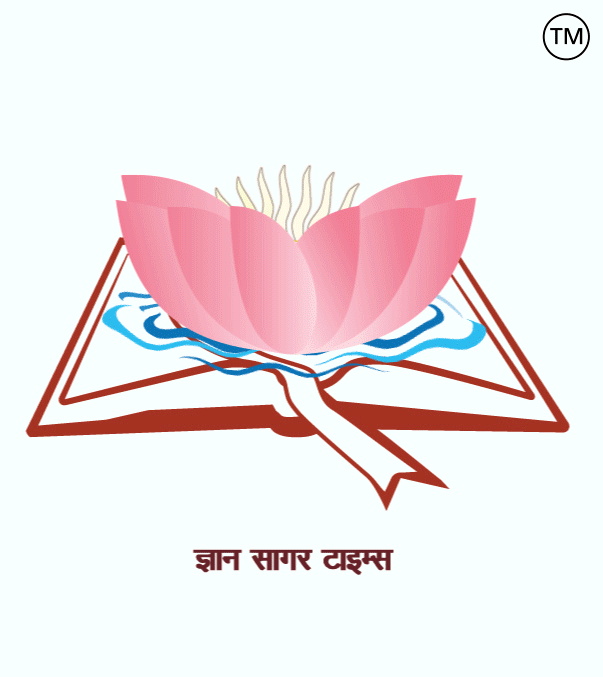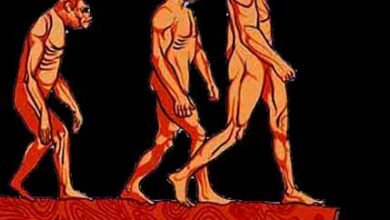
Related to Physics-156.
|
1. Who invented the barometer? = Toricelli. 2. Who invented the gramophone? = Graham Bell. 3. What is the unit of work? = Joule. 4. Whose Unit is the Light Year? = Astronomical distance. 5. Whose unit is lumen? = Luminous Flux. 6. Whose unit is named ‘Curie’? = Radioactivity. 7. Whose basic unit/volume is the photon? = Light. 8. Whose unit is the diopter? = Lens Capacity. 9. The particle nature of radiation is confirmed by = Albert Einstein. 10. What physical amount is obtained by the ratio of momentum and velocity of matter? = Mass. 11. According to Newton’s Second Law of Motion? = The definition of force is determined from it. 12. When 1 kg of a liquid is converted from liquid to vapor at its boiling point, what is the heat absorbed in it? = Latent energy of evaporation. 13. “In the process of electrical decomposition, the amount of material released on an electrode is directly proportional to the charge flowing throughout”. this rule? = First rule of Faraday’s power decomposition. 14. A constant magnet always shows? = North-North and South-South. 15. Velocity of sound in different mediums? = Varies and is the highest in the solid. 16. What is the effect on electrical resistance and electrical conductivity of conductive materials when heat is increased? = Electrical resistance increases while electrical conductivity decreases. 17. The alpha particle has two units of positive charge. Its mass is approximately equal to? = Sum of mass of two positrons and two neutrons. 18. Which one mirror is used to make periscope? = Plane mirror. 19. What type of mirror is used to view the traffic behind you while driving a car? = Convex mirror. 20. What image is formed on the retina of the human eye? = Real and Inverted. 21. If an object is placed between two parallel plane mirrors, then the number of images will be = Infinite. 22. If a person stands between two plane mirrors which are inclined at a 60 ° angle, then how many images will he see? = Five images. 23. How many colors of white light are made of? = Seven. 24. What type of lens is used in the camera? = Convex. 25. If the atmosphere is not there, what color will the sky appear from the earth? = Black. 26. Which color has the maximum wavelength? = Red. 27. If a person cannot see distant things clearly, then what will be the fault in his eyes? = Myopia. 28. If a person cannot clearly see an object less than 1 meter away, then what will be the fault in his eyes? = Far sight, Hypermetropia. 29. Which lens is used in the glasses of a person with far-sightedness? = Convex lens. 30. What does a watch instrument use to look at the fine part of a watch? = Magnifying lens. 31. Which lens is used to correct near-sight defects? = Concave. 32. What type of image does a concave lens always make? = Virtual image. 33. When the light waves pass through the glass into the air, which changes will be affected? = Wavelength and velocity only. 34. The element of an electric bulb is made up of = Tungsten. 35. By whom is the alternating current replaced by a direct current? = Rectifier. 36. Which is produced to transform solar energy using light voltaic cell? = Solar cell as particle of solar energy. 37. Who propounded the universal law of gravity? = Newton. 38. The heat required to change the state of matter at constant temperature is called a substance? = Latent heat. 39. Which line does light move? = Straight line. 40. What is light wave? = Is transverse & Electromagnetic wave. 41. The speed of light depends on the medium? = At refractive index. 42. When the refractive index of the medium is high, the speed of light? = Decreases. 43. If light goes from one transparent medium to another transparent medium, then its? = Becomes refraction. 44. When light passes through such a medium, which contains extremely fine particles of dust and other substances, light is transmitted through them in all directions. = Is called scattering of light. 45. At the time of refraction, the incident ray, the normal and the refracted ray are located in the same? = In plane. 46. As the wavelength increases, the value of refractive index becomes = Decreases. 47. If the ray of light goes through the sparse medium into the dense medium, then towards the normal? = Bends. 48. If the ray of light goes from the dense medium to the sparse medium, then it is normal? = Moves away. Prof. Amarendra Kumar. ========== ========= =========== भौतिकी से संबंधित-156.
1. बैरोमीटर का आविष्कार किसने किया था? = टोरीसेल्ली. 2. ग्रामोफोन का आविष्कार किसने किया था ?= ग्राहम बेल. 3. कार्य का मात्रक क्या होता है? = जूल. 4. प्रकाशवर्ष मात्रक किसका है? = दूरी का. 5. ल्यूमेन किसका मात्रक है? = ज्योति फ्लक्स का. 6. ‘क्यूरी’ किसकी इकाई का नाम है? = रेडियोधर्मिता. 7. फोटॉन किसकी मूलभूत यूनिट/मात्रा है? = प्रकाश. 8. डाइऑप्टर किसकी इकाई है ? = लेंस की क्षमता. 9. विकिरण की कण प्रकृति की पुष्टि किससे की जाती है? = अल्बर्ट आइंस्टीन. 10. पदार्थ के संवेग और वेग के अनुपात से कौन-सी भौतिक राशि प्राप्त की जाती है? = द्रव्यमान. 11. न्यूटन की गति के द्वितीय नियम के अनुसार? = इससे बल की परिभाषा ज्ञात की जाती है. 12. जब किसी द्रव की 1 किग्रा मात्रा अपने क्वथनांक पर द्रव से वाष्प में परिवर्तित होती है, तो इसमें अवशोषित होने वाली ऊष्मा को क्या कहते हैं? = वाष्पीकरण की गुप्त ऊर्जा. 13. ‘‘वैद्युत् अपघटन की क्रिया में किसी इलेक्ट्रोड पर मुक्त हुए पदार्थ की मात्रा सम्पूर्ण प्रवाहित आवेश के अनुक्रमानुपाती होती है”. यह नियम? = फैराडे का विद्युत् अपघटन सम्बन्धी प्रथम नियम. 14. एक स्थिर चुम्बक हमेशा दर्शाती है? = उत्तर-उत्तर तथा दक्षिण-दक्षिण. 15. ध्वनि का वेग भिन्न-भिन्न माध्यमों में? = भिन्न-भिन्न होता है और ठोस में सबसे अधिक होता है. 16. ताप के बढ़ाने पर चालक पदार्थों का वैद्युत् प्रतिरोध एवं वैद्युत् चालकता पर क्या प्रभाव पड़ता है? = वैद्युत् प्रतिरोध बढ़ता है जबकि वैद्युत चालकता घटती है. 17. ऐल्फा कण के दो इकाई धन आवेश होते हैं। इसका द्रव्यमान लगभग बराबर होता है? = दो पोजिट्रॉनों और दो न्यूट्रॉनों के द्रव्यमान के योग के. 18. पेरिस्कोप बनाने में कौन-सा एक दर्पण प्रयुक्त होता है? = समतल दर्पण. 19. कार चलाते समय अपने पीछे के यातायात को देखने के लिए किस प्रकार के दर्पण का प्रयोग किया जाता है? = उत्तल दर्पण. 20. मानव आंख की रेटिना पर कैसा प्रतिबिम्ब बनता है? = वास्तविक तथा उल्टा. 21. कोई बस्तु दो समानान्तर समतल दर्पणों के बीच रखी जाती है, तो बने हुए प्रतिबिम्बों की संख्या होगी?= अनन्त. 22. यदि एक व्यक्ति दो समतल दर्पण जो 60° कोण पर आनत है, के बीच खड़ा हो तब उसे कितने प्रतिबिम्ब दिखेंगे? = पाँच. 23. श्वेत प्रकाश कितने रंगों के मेल से बना होता है ? = सात. 24. कैमरे में किस प्रकार का लेन्स उपयोग में लाया जाता है ? = उत्तल. 25. यदि वायुमण्डल न हो तो पृथ्वी से आकाश किस रंग का दिखाई देगा? = काला. 26. किस रंग का तरंगदैर्घ्य अधिकतम होता है ? = लाल. 27. यदि कोई व्यक्ति दूर की वस्तुओं को स्पष्ट नहीं देख सकता है तो उसकी दृष्टि में कौन-सा दोष होगा?= निकट दृष्टि. 28. एक मनुष्य 1 मीटर से कम दूरी की वस्तु को स्पष्ट नहीं देख सकता है तो उसकी दृष्टि में कौन-सा दोष होगा? = दूर दृष्टि. 29. दूर दृष्टि दोष से पीड़ित व्यक्ति के चश्में में कौन-सा लेन्स प्रयोग किया जाता है? = उत्तल लेन्स. 30. घड़ी साज घड़ी के बारीक पुर्जी को देखने के लिये किसका उपयोग करता है? = आवर्द्धक लेन्स. 31. निकट दृष्टिकोण दोष दूर करने के लिए कौन-सा लेन्स उपयोग में लाया जाता है? = नतोदर. 32. अवतल लेंस हमेशा किस प्रकार का प्रतिबिम्ब बनाते हैं? = आभासी प्रतिबिम्ब. 33. जब प्रकाश की तरंगें वायु से कांच में होकर गुजरती है, तब कौन से परितर्त्य प्रभावित होंगे? = केवल तरंगदैर्ध्य और वेग. 34. बिजली के बल्ब का फिलामेन्ट किस तत्व से बना होता है? = टंगस्टन. 35. प्रत्यावर्ती धारा को दिष्ट धारा में किसके द्वारा बदला जाता है? = रेक्टीफायर. 36. प्रकाश वोल्टीय सेल के प्रयोग से सौर ऊर्जा का रूपान्तरण करने के किसका उत्पादन होता है? = सौर ऊर्जा. 37. गुरुत्वाकर्षण के सार्वभौमिक नियम का प्रतिपादन किसने किया था? = न्यूटन. 38. नियत ताप पर पदार्थ की अवस्था में परिवर्तन के लिए आवश्यक उष्मा को पदार्थ को कहा जाता है? = गुप्त उष्मा. 39. प्रकाश किस रेखा में गति करता है ? = सरल रेखा. 40. प्रकाश तरंग होती है? = अनुप्रस्थ होती है एवं विधुत चुम्कीय तरंग. 41. प्रकाश की चाल माध्यमों पर निर्भर करती है? = अपवर्तनांक. 42. माध्यम का अपवर्तनांक अधिक होने पर प्रकाश की चाल? = कम हो जाती है. 43. यदि प्रकाश एक पारदर्शक माध्यम से दूसरे पारदर्शक माध्यम में जाता है तो उसका? = अपवर्तन हो जाता है. 44. जब प्रकाश ऐसे माध्यम से गुजरता है, जिसमें धूल तथा अन्य पदार्थों के अत्यंत सूक्ष्म कण होते हैं, तो इनके द्वारा प्रकाश सभी दिशाओं में प्रसारित हो जाता है उसे ? = प्रकाश का प्रकीर्णन कहा जाता है. 45. अपवर्तन के समय आपतित किरण, अभिलम्ब तथा अपवर्तित किरण तीनों एक ही में स्थित होते हैं? = समतल में. 46. तरंग दैर्ध्य बढ़ने के साथ-साथ अपवर्तनांक का मान हो जाता है? = कम हो जाता है. 47. यदि प्रकाश की किरण विरल माध्यम से सघन माध्यम में जाती है तो वह अभिलम्ब की तरफ? = झुक जाती है. 48. यदि प्रकाश की किरण सघन माध्यम से विरल माध्यम में जाती है तो वह अभिलम्ब से? = दूर हट जाती है.
प्रो. अमरेंद्र कुमार.
|






